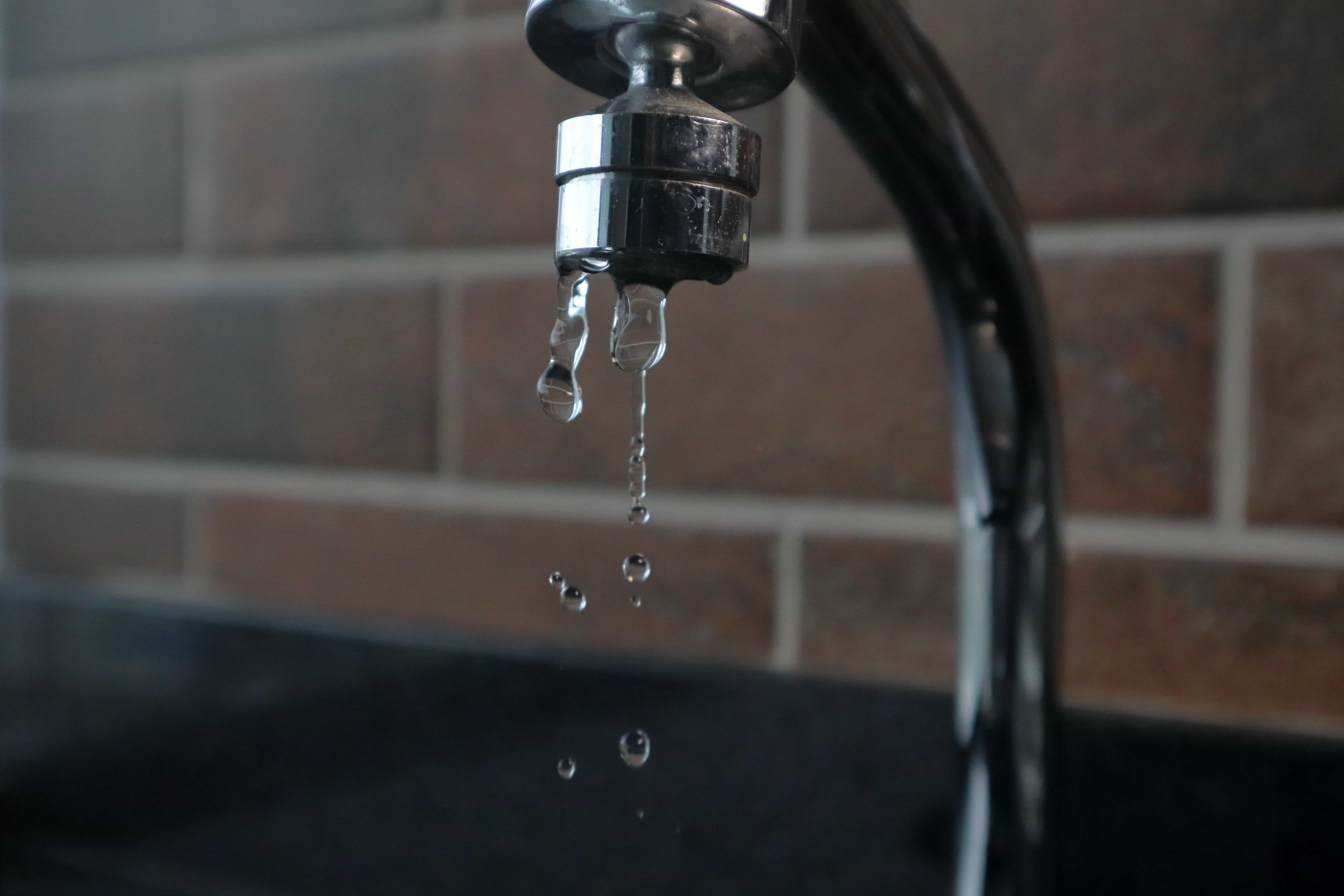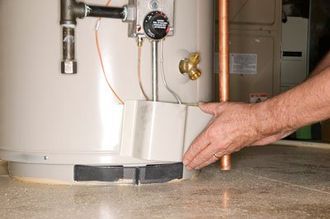Sustainable Plumbing Fixtures: Uplifting Residences Sustainability
Sustainable Plumbing Fixtures: Uplifting Residences Sustainability
Blog Article
The article author is making a few great observations related to Sustainability Remains Key Trend in Plumbing Practices as a whole in this content followed below.

Introduction
In today's world, sustainable living is ending up being significantly important. One area where property owners can make a considerable influence is via eco-friendly plumbing solutions. By adopting environmentally aware methods, households can minimize their water and energy usage while contributing to a much healthier world.
Water-Efficient Components
Traditional components frequently waste water needlessly. Nevertheless, modern low-flow toilets, taps, and showerheads are created to lessen water usage without sacrificing efficiency. These components can considerably reduce household water intake, bring about reduced water costs and a reduced ecological footprint.
Greywater Solutions
Greywater refers to carefully made use of water from sources such as showers, sinks, and washing equipments. Rather than allowing this water go to waste, greywater systems reuse it for non-potable uses such as landscape irrigation and bathroom flushing. By applying a greywater system, property owners can save fresh water resources and reduce stress on local wastewater therapy centers.
Rain Harvesting
Rain collecting entails accumulating and saving rain for numerous objectives, consisting of watering, bathroom flushing, and laundry. Rainwater harvesting systems typically consist of a collection surface area (such as a roof covering), gutters, downspouts, and tank. By collecting rain, home owners can reduce their dependence on metropolitan water resources and conserve fresh water resources.
Solar Water Heaters
Typical hot water heater depend on nonrenewable fuel sources or electricity to heat water, contributing to carbon emissions and power intake. In contrast, solar hot water heater utilize sunlight to heat water, using an eco-friendly and eco-friendly choice. By taking advantage of solar power, house owners can decrease their energy bills and reduce their carbon impact.
Eco-friendly Pipe Materials
Typical plumbing materials such as copper and PVC can have negative environmental impacts during manufacturing and disposal. Nonetheless, there are sustainable choices available, such as recycled steel, cross-linked polyethylene (PEX), and high-density polyethylene (HDPE). These green pipeline materials provide longevity, durability, and lowered environmental effect.
Energy-Efficient Devices
In addition to water-efficient components, energy-efficient appliances can additionally decrease a family's ecological impact. High-efficiency washing devices and dishwashing machines make use of much less water and energy per cycle, aiding to preserve resources and reduced utility expenses. When buying devices, search for ENERGY STAR ® accredited models for optimal efficiency.
Smart Water Management Systems
Breakthroughs in technology have made it much easier than ever before to monitor and maximize water usage in the home. Smart water administration systems make use of sensing units and information analytics to track water use in real-time, determine leakages, and provide insights for preservation. By executing clever water administration services, property owners can decrease waste and make the most of efficiency.
Expense Factors to consider
While environmentally friendly pipes options may have higher ahead of time prices than typical alternatives, they commonly supply long-term savings with lowered water and energy expenses. Furthermore, lots of governments provide rewards such as refunds and tax credits for environment-friendly upgrades, helping to balance out preliminary expenditures.
Setup and Upkeep
Correct installation and routine upkeep are essential for making certain the efficiency and durability of eco-friendly pipes systems. It is very important to employ qualified experts to set up and service these systems to prevent problems and make the most of efficiency. Regular upkeep jobs such as looking for leaks and cleansing filters can also aid protect against troubles and optimize efficiency.
Ecological Benefits
The ecological advantages of environment-friendly plumbing are significant. By preserving water and power, home owners can reduce their carbon impact and minimize their influence on natural resources. In addition, eco-friendly pipes methods can assist shield ecosystems and protect biodiversity for future generations.
Health and wellness Benefits
In addition to environmental benefits, environmentally friendly pipes can also contribute to enhanced indoor air high quality and health and wellness. By utilizing non-toxic materials and minimizing chemical direct exposure, home owners can develop a healthier living setting on their own and their households.
Government Incentives
Many federal governments supply monetary incentives to urge house owners to take on environment-friendly plumbing practices. These motivations may include rebates, tax obligation credit scores, and low-interest fundings for energy-efficient upgrades. By capitalizing on these programs, homeowners can make environment-friendly renovations a lot more budget-friendly and available.
Verdict
Finally, environmentally friendly pipes alternatives use countless advantages for house owners and the setting alike. By purchasing water-efficient components, greywater systems, rain harvesting, solar water heaters, environment-friendly pipe products, energy-efficient home appliances, smart water monitoring systems, and various other lasting services, homes can lower their environmental footprint, reduced their energy costs, and contribute to a healthier world for future generations.
Eco-Friendly Plumbing: Transform Your Home with Sustainable Plumbing Options
Understanding Eco-Friendly Plumbing System
At its core, eco-friendly plumbing is all about minimizing water and energy consumption in your home. It’s a green plumbing revolution changing how we think about our water supply and energy use. It offers many options for homeowners, whether you’re upgrading your home or dealing with an older home. By making these changes, you can help the environment, save money on your water and electricity bills, and create a greener, more sustainable home. So, read on to learn how to use eco-friendly plumbing solutions today.
Low Flow Fixtures: A Key to Water Conservation
One of the cornerstones of eco friendly plumbing is the use of low-flow fixtures. These fixtures, which include faucets, showerheads, and toilets, are designed to use much less water than their traditional counterparts. For instance, low-flow showerheads use significantly less water per minute than a standard showerhead without compromising the quality of your shower.
Low-flow toilets are another excellent example of water-saving options. They use fewer gallons of water per flush, making them a more water-efficient choice. By reducing your water usage, these fixtures contribute to a greener home and substantial savings on your water bills.
Maintaining an Eco-Friendly Plumbing System
Another critical aspect of eco-friendly plumbing is addressing water leaks promptly. A small water leak can waste much water over time, leading to water damage and increased water bills.
Regularly checking your plumbing system and fixing leaks can help save gallons of water and reduce your water bills.
Tankless Water Heaters: Hot Water When You Need It
Tankless water heaters, a popular choice in eco-friendly plumbing, are a revolutionary way to heat water in your home. Unlike traditional water heaters that constantly heat a tank of water, tankless water heaters operate on an on-demand basis. This means they only use energy when you need hot water, making them a more energy-efficient option.
This innovative approach to heating water can significantly reduce the energy your home uses. Traditional water heaters constantly work to keep a water tank heated, which requires much energy. In contrast, tankless water heaters heat water when needed, reducing energy consumption and saving money on energy bills. This is a great way to make your home more eco-friendly and embrace an eco-friendly lifestyle.
Insulating Water Pipes: Maximizing Energy Efficiency
Insulating your water pipes is another effective method in eco-friendly plumbing. Proper insulation can prevent heat loss, ensuring your hot water remains hot as it travels from your water heater to your faucet or showerhead. This means your water heater won’t have to work as hard to heat the water, thus saving energy.
For instance, insulating your water pipes can further enhance energy efficiency if you’re using a tankless water heater, which heats water only when needed. This is because the insulation reduces the heat lost as the hot water travels through the pipes, meaning the heater uses less energy to bring the water to the desired temperature.
Dual Flush Toilets: A Water Saving Option
Dual flush toilets are another excellent eco-friendly plumbing option that can help you save water. These toilets offer two flush options: one for liquid waste and one for solid waste. The liquid waste option uses less water than solid waste, allowing you to choose the water flow for each flush based on your needs.
Using less water for liquid waste, dual flush toilets can save thousands of gallons per year compared to traditional bathrooms. This can lead to significant savings on your water bills and contribute to a more sustainable and eco-friendly home.
Touchless Faucets: Saving Water With a Wave of Hand
Touchless faucets are a modern, eco-friendly plumbing option that can help reduce unnecessary water use. These faucets use motion sensors to turn on and off, meaning they only use water when you need it.
This can be particularly useful in the kitchen, where your hands might be full or dirty. Instead of leaving the water running while you handle food or clean dishes, the faucet will only run when your hand comes near the sensor. This reduces water flow and helps you use less water than traditional faucets, contributing to a more eco-friendly lifestyle.
Eco-Friendly Pipes: Eco-Friendly Plumbing Options
When considering eco-friendly plumbing options, paying attention to the materials used in your plumbing system is essential. Some pipes, like those made from copper or stainless steel, are recyclable and more environmentally friendly than PVC pipes. Choosing eco-friendly materials for your pipes can reduce your home’s environmental impact and create a more sustainable plumbing system. By making these small changes, you can make a big difference in your home’s eco-friendliness.
Eco-Friendly Plumbing: Make Your Home Greener
Switching to eco-friendly plumbing options can have a significant positive impact on the environment and your wallet. Not only can these changes reduce your water and energy consumption, but they can also help prevent water waste and damage, contributing to a healthier planet.
Eco-friendly plumbing is more than just a trend; it’s a lifestyle change contributing to a more sustainable future. By making these changes in your home, you can help the planet while saving money on your water and energy bills.
https://intownplumbingtx.com/articles/eco-friendly-plumbing/

I came across that piece on Eco-Friendly Plumbing: Transform Your Home when doing research the web. Are you aware of anybody else who is looking into 6 Reasons to Choose Eco-Friendly Plumbing Solutions? Be sure promote it. Bless you for your time. Don't forget to check our blog back soon.
Call Today Report this page